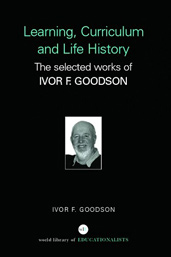Learning, Curriculum and Life Politics: the selected works of Ivor F. Goodson
Long Waves of Educational Reform
Conclusion
Our studies of eight schools in the United States and Canada, during the post-war period, point up clear patterns in the periodization of educational change and reform. Our data shows how employing an annaliste methodology, and a Kondratievian conception of conjuncture and long waves, helps conceptualize periodization. The most distinctive conjunctures of change are the periods from the mid-1960s to the late 1970s, and the period beginning in 1996, which is currently underway (see Goodson 2003).
The conjuncture of the 1960s and 1970s aligns with the economic long wave upswing, which ended with the oil crisis of 1973. There all schools were sites of reform and innovation with large new cohorts of teachers, and often new, purpose-built facilities. Some schools organized their changes around teacher initiation and student culture, but within the existing ‘grammar of schooling’. Whilst other schools attempted ‘root and branch’ revolutionary change at all levels, from classroom through to school management. All schools were affected by the progressive desire to build a ‘Great Society’, characterized by social inclusion and social justice. In Hobsbawm’s words, this was in general a ‘golden age’ of social progress, although one littered with contradictions and contestations.
The later conjuncture, beginning in the mid-1990s, is starkly different. In many ways, instead of a progressive purpose, this is a social experiment with strong regressive tendencies. We have cohorts of teachers who are disenfranchised politically, alienated intellectually, depressed emotionally and drained physically.
It seems that over-prescribed targets and objectives, and the market fundamentalist ethos, do little to ‘inspire sound vision’ and vocational commitment. Whilst the new change forces have sought to plan schools on a more coherent vision, than the ‘free spirit’ of the 1960s/1970s conjuncture, this has come with a substantial downside. A more systematic pattern of governance and accountability there may be, but when linked to regressive and prescriptive policies, this seems to have been a source of irritation, rather than inspiration to the teachers at the delivery end of the process. We suspect that the new conjuncture of change is running towards the end of its provenance and that new conceptions of improvement will begin to work their way on to center stage in our classrooms and schools.
